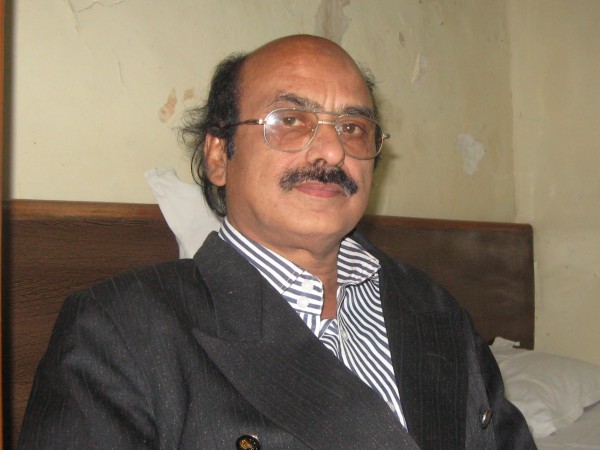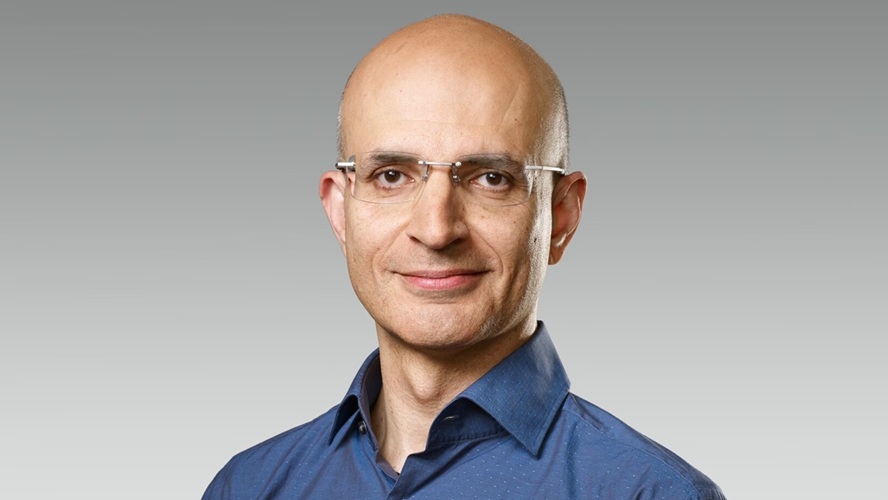By Dr. Javed Jamil
Islamic Finance
Islamic Finance including Islamic Banking and non-Banking Finance sectors have generated considerable interest all over the world in the last few decades. There is an increasing demand for permission to establish Islamic Banking in India. This is a natural demand considering the fact that India has more than 0.18 billion Muslims. But this entails many problems as well owing to various governmental policies. Dr Muhammad Najeeb Ghazali Khayatm Director Islamic Economics Research Centre, SA, writes:
“The Islamic financial services industry has come of age. According to one estimate there are presently over two hundred Islamic banks and financial institutions all over the globe with total transactions valued at over 120 billion US dollars. A cursory look at these financial institutions and the nature of their operations reveals an interesting aspect of the growth of this sector. There does not seem to be much of a correlation between the numbers of Islamic financial institutions established in a given region with the size of the market that these institutions can potentially serve. For example, countries like Indonesia and India which together account for over one-third of world Muslim population do not score very high in terms of growth of the Islamic financial services industry. This may be due to a variety of reasons, which are often not rooted in economics. India with a population of over 150 million Muslims particularly lags behind with a near-total absence of organized Islamic banks and financial institutions. As such, the situation merits serious attention of researchers and scholars.. Notwithstanding the scant attention that Islamic banking has received from regulators and policy makers in India, small Muslim communities have taken initiative to establish a fairly large number of tiny and small institutions, often in the cooperative, informal and unorganized sector to serve local needs. The challenges confronting these institutions are many, further compounded by the absence of an appropriate legal and regulatory framework. “
I will like to quote here from two important papers on the subject, which describe the history of Islamic finance institutions in the country and the hurdles in their successes:
“A well-developed and efficient capital market is an indispensable prerequisite for the effective allocation of savings in an economy. A financial system consisting of financial institutions, instruments and markets provides an effective payment and credit supply network and thereby assists in channelling of funds from savers to the investors in the economy. The task of the financial institutions or intermediaries is to mobilise the savings and ensure efficient allocation of these savings to high yielding investment project so that they are in a position to offer attractive returns to the savers. “The attempts made by Indian Muslims in this regard and how some of the later developments in the form of changing regulatory environment has affected their functioning.
“Since the last two decades, India has continuously managed an average saving rate at above 20 percent of the GDP (Bhandari, & Aiyar, 1999, p.29). Considering their relative economic backwardness even 15 percent saving rates for Muslims would fetch an enormous amount of annual savings to the community. Besides, there are billions worth properties lying in the form of Awqaf. Zakah potential of the Indian Muslims still largely remains untapped and under utilized.
“.. they define Banking in such a way that Banks can accept deposits from public only for further lending. For example, Section 5 (b) and 5 (c) of the Banking Regulation Act, 1949 prohibit the banks to invest on PLS basis
, 1949, 1999, p. 12) reads, “No banking company shall directly or indirectly deal in buying or selling or bartering of goods …”.
“On the other hand the insurance sector, which has recently been opened for the private sector, is still beyond the reach of small capital holders. Entry norms and regulatory framework makes it further difficult for the small capital owners to think entering this field. Mutual funds are open to the private players. But they too are beyond the reach of small capital holders. Besides the initial requirements of large capital and some other stringent requirements are well beyond the reach of Islamic financial institutions. In short anybody going for Islamic alternatives in finance has the option of choosing only the Non Banking Financial Companies format for its easy entry norms, low capital requirements, lower regulations and flexibility in registration and functioning.
“The Tata Mutual Fund made a pioneering attempt when, at the instance of the Barkat and some other Islamic financial group, it launched Tata Core Sector Equity Fund in 1996 (IEB, 1996a). This scheme was specially tailored keeping in view the Muslims inhibition of dealing with interest bearing and haram investments. This scheme surprised many by being able to raise Rs. 230 million from the public. After initial hiccups the scheme did well for three years. After that the nomenclature was changed to the ‘Tata IT sector Fund’ (IEB, 2000a).”
“By 1980s, Muslims started venturing into profit oriented business as well. This was made possible for three reasons; firstly, by that time, Indian Muslims had gained some financial expertise through successful running of non-profit financial businesses; secondly, the Islamic financial movement started in late seventies had gained momentum throughout the Islamic world giving an impetus to the Indian Muslims as well; lastly, the new economic policy initiated in early 1990s focussing on privatisation, liberalisation and globalisation from the old controlled regime provided new opportunities for the overall growth of the business……..
“ The decade of 1980s and 1990s saw proliferation of Islamic NBFCs. India’s decision to introduce large-scale regulatory changes in the non-banking financial sector at a time when most of the South Asian countries were passing through severe economic recession did not augur well for the non-banking finance sector. More so Islamic NBFCs appears to have suffered more because of the distinct nature of their business and other religious constraints like not being able to avail the conventional avenues available to other financial institutions. In a fast changing regulatory environment like this, a conventional NBFC would prefer keeping its money in commercial banks than to go with risk associated ventures that are part and parcel of Islamic financial institutions. On the other hand small size of Islamic NBFCs and a lack of the lender of last resort besides naive and complacent attitude towards the regulation also had a fair share in their failures. Perhaps the recessionary economic phase could have easily been tackled had the management been more alert and investors more informed…… (Paper by *Shariq Nisar Joint Editor Islamic Economics Bulletin, India)
Shafiq Nisar then gives suggestions how Muslims can operate in India. He says:
“Experiences of the Islamic NBFCs in India underscore at least two points: (ii) Internally, Islamic NBFCs should be well capital adequate besides being highly cautious in their business operations and
(iii) In a secular democratic country like India there is need for some sort of advocacy groups that work quietly in creating soothing conditions for Islamic oriented businesses.”
He says that “Islamic financial institutions constantly need to diversify their investment basket through innovations and improvement in technology. In a secular country like India it could be difficult due to non-recognition of Islamic principles but nevertheless they are important and need to be conveyed to the regulators through all the legal means.” He adds:
“Self imposed moratorium on certain qualified modes of finance by certain Islamic finance houses instead of increasing the reputation led to isolation and lopsided investments. Therefore, more flexibility is needed to cope with the changing business environment. Lack of the lender of last resort has been a major cause of concern for Islamic financial institutions the worldwide. Therefore, the establishment of any such institutions that could act as the lender of last resort should be the topmost priority by Islamic economists and policy makers.”
He is also right in having a dig at the “Islamic” institutions that are running covert operations, which have nothing to do with Islamic principles of economics. “Another issue that needs immediate attention of the policy makers is to put a check on tainted profit seekers who just fore the sake of their small profit vitiate the whole environment for genuine concerns. Many institutions that operate on the basis of interest disguising them as an Islamic financial alternative, either overtly or covertly only help in creating a crisis of confidence. People also need to be informed about the Islamic finance principles so that at the time of crises they do not create unnecessary panic and rumours leading to contagion.”
According to another paper, entitled, “ISLAMIC FINANCIAL INSTITUTIONS OF INDIA: PROGRESS, PROBLEMS AND PROSPECTS*, there are about 300 IFIs in India. Even most of the Indians including Muslims do not know about them. Very little is known about the functioning, socioeconomic performance and potential of IFIs in India even to the knowledgeable Islamic Economists.” The study makes a critical assessment of these IFIs. Analysing their performance it says: “Unfortunately after independence Indian Muslims in general have fallen from grace, their collective socio-economic productivity has declined, poverty and suffering have increased. Perhaps by giving a boost to the organisation and operation of IFIs they can turn around their own socio-economic status as well as contribute a new institutional set-up to the growing needs of their progressive country and economy. A well-organised, well managed chain of purposeful IFIs can be utilised to finance their entrepreneurship and economic growth on the one hand and enhance Falah or social welfare on the other hand. We have every right to utilise the forces of economic liberalisation and globalisation for our own and the country’s progress and welfare. Economic environment is just right for the promotion of large-scale profit and loss sharing (PLS), Equity or Venture Capital based IFIs
‘The Directory of Islamic Banks’ by Dr. Rehmatullah in 1992 has described brief profiles of a few IFIs in India and the addresses of 159 Indian IFIs. However various types of IFIs, about 300, are flourishing in India… Based on their functional model and registration this study has classified all the Indian IFIs into four distinct categories.
I. Financial Associations of Persons (FAPs). These are unregistered, interest-free, self help groups belonging to unorganised sector of Islamic Finance in India.
II. Islamic Financial Societies (IFSs) registered under Societies Act. or Charitable Trust Act.
III. Islamic Co-operative Credit Societies (ICCSs) registered under various state Co-operative Societies Acts.
IV. Islamic Investment and Financial Companies (IIFCs) registered under companies Act.
The conclusions that can be drawn are simple:
1. There is great scope of Islamic Finance of all major types in India including Islamic Banking. The chances of success are high because Muslims in India are more than 0.18 billion and they are expected to enter into a new phase of relative prosperity.
2. These chances depend on the acceptance of Islamic Banking by the Indian government;
3. The Indian government will have to remove hurdles in the way of Islamic Financial Sector considering the demands of its second largest majority;
4. If Indian government takes necessary steps in that direction, it will ultimately benefit the country as a whole;
5. Muslims will have to make simultaneous advances in the corporate Sector, Small and medium sized industries as well as on education front if it has to benefit from Islamic Finance. Islamic Finance depends ultimately on wealth generation and massive efforts are needed in that direction.
6. Muslims will have to take various precautions if they have to develop Islamic finance institutions. Reactions
* Dr Javed Jamil is Executive Chairman, International Centre for Applied Islamics, Chief Editor, “Islam, Muslims & the World” and Director PEACE. He is also author of more than a dozen books including “Islam means Peace”, “The Essence of the Divine Verses”, “The Killer Sex”, “Rediscovering the Universe”, “The Devil of Economic Fundamentalism” and “Islamic Model for Control of AIDS”. Also has more than 200 articles and papers to his credit. His soon-to-be-published works include “Scientific & Social Principles based on Qur’an” and “Westernism: the Ideology of Hegemony”. He can be reached at doctorforu123@yahoo.com. Phones: 91- 8130340339






0 Comments